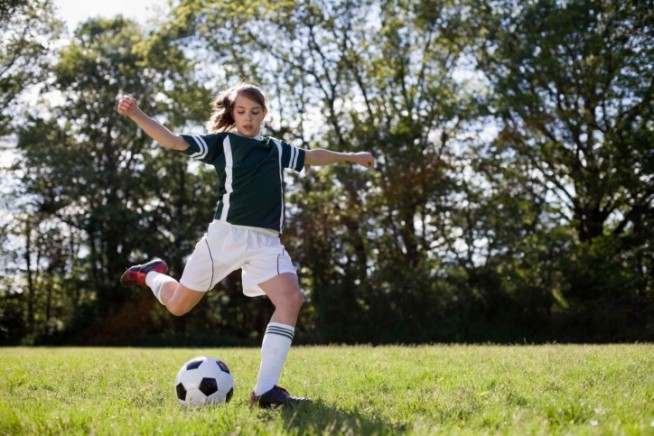Kids have a job. And that is to play. Play is important as it builds strength, coordination, balance, and we musn’t forget confidence and teamwork. The mind and body of a child is ever changing, developing, growing, and adapting to the world around them. If kids are unable to play due to an injury, it not only affects the child, but it affects their parents and even their siblings. Naturally, parents want everything for their kids. I have had many parents tell me they would do anything for their child.
Whether they want to return to the playground, playing field, swimming pool, or court, here are some of the answers to some of the most frequently asked questions I get from parents regarding their child’s recent injury, recovery process, and long-term effects.
1. The Early Years
When a child turns four, five, or six, parents start getting them involved in gymnastics, t-ball, dance, or soccer. At these ages kids are still reaching certain physical milestones including hopping, skipping, jumping, riding a bike, swimming, catching or kicking a ball, etc. While some kids learn these activities quickly, there are also the late bloomers. Sometimes a child’s body looks physically ready to play sports, yet their mind-body connection is what needs coordinating to reach those milestones. If your child is a late bloomer be patient. With practice, repetition, and time they will catch up.
2. Growing Pains
When kids experience aches and pains in their joints, especially in their legs, remember they are still growing. Kids can often play through the discomfort of growing pains and will probably continue to have pain until their growth spurts subside. This is normal. Keep in mind with growth spurts also comes the risk of avulsion fractures for those competitive teen athletes. This occurs when the muscle contraction, during running or cutting for example, is stronger than the bone it’s attached to. Because muscles grow at a slower rate than bones this is more common in kids than adults. It’s important to heal a current sprain or strain fully, decreasing their risk of an avulsion fracture.
3. Sticking to One Sport
More and more kids are focusing on one sport at younger ages. During the pre-puberty years, children should participate in a variety of activities, such as swimming, soccer, t-ball, and/or karate. Not to say they should do all of these activities, but it is really important to provide balance in a child’s body. Varying at least a couple different activities will prevent them from burnout while improving overall endurance, strength, coordination, and balance. Participating in only one sport while still growing and developing can predispose them to injury as their muscles are imbalanced. If picking one sport, it’s best to wait until they hit high school, or even later.
4. Returning to Sport
Overall, kids do heal faster than adults. But its also important to keep in mind that if your child is returning to contact sports like soccer, basketball, or football they are required to perform dynamic activities that place greater demands on their body. Whether it’s a shoulder injury, twisted knee, or sprained ankle, they should be able to perform pain-free drills including running, cutting, jumping, hitting, or throwing before returning to full sport so as not to predispose them to re-injury.
5. Weight Training
As kids reach their teenage years, especially boys, they want to start weight training. Weight training is okay, but keep in mind they are still growing. Lifting heavy weights can compress bones affecting overall growth and maturation. At young ages, kids muscles are not yet mature enough to actually gain muscle mass. If your child participates in sports like football, basketball, or baseball, it’s better to lift weight to improve endurance. Low weight with high reps is best.
In general, communicating with your child, their coaches, and P.E. teacher can help prevent injuries before they start. I have learned that kids are stoic. They want to play, return to sport, pushing through pain toughing it out until they can’t go anymore. They don’t want to let anyone down. So ask them questions. Make sure they are doing okay. Don’t hesitate scheduling a visit with their Pediatrician or Physical Therapist for proper care in case they are hurt. If they are, remember, kids are resilient. They WILL heal. They WILL bounce back. And often times they will return stronger physically and mentally.
Erin Carr, DPT, is an integrative physical therapist at The Akasha Center for Integrative Medicine. She works with individuals of all ages and variety of conditions using a multi-faceted treatment approach. She spends time educating her patients on their injury and healing process creating a team approach with the goal of diminishing pain and restoring optimal function. You can also visit Erin’s website HERE.
The Akasha Center recently launched Akasha Naturals. Click on each of their products to see the research behind some of the highest quality / evidence-based nutritional supplements on the market.












